Samsung SSD 850 Pro (128GB, 256GB & 1TB) Review: Enter the 3D Era
by Kristian Vättö on July 1, 2014 10:00 AM ESTRandom Read/Write Speed
The four corners of SSD performance are as follows: random read, random write, sequential read and sequential write speed. Random accesses are generally small in size, while sequential accesses tend to be larger and thus we have the four Iometer tests we use in all of our reviews.
Our first test writes 4KB in a completely random pattern over an 8GB space of the drive to simulate the sort of random access that you'd see on an OS drive (even this is more stressful than a normal desktop user would see). We perform three concurrent IOs and run the test for 3 minutes. The results reported are in average MB/s over the entire time.
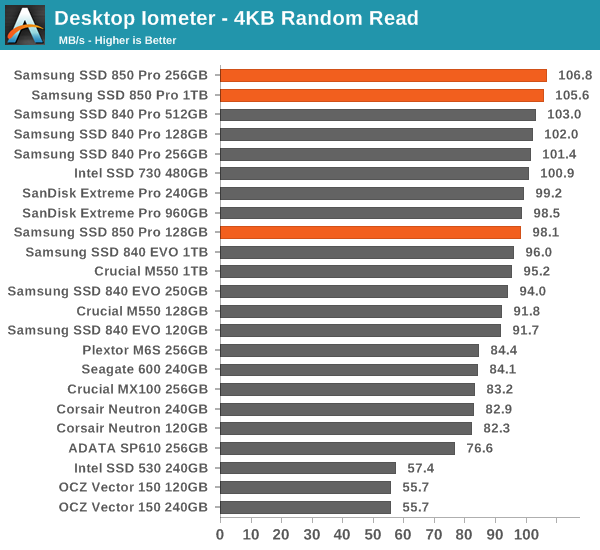
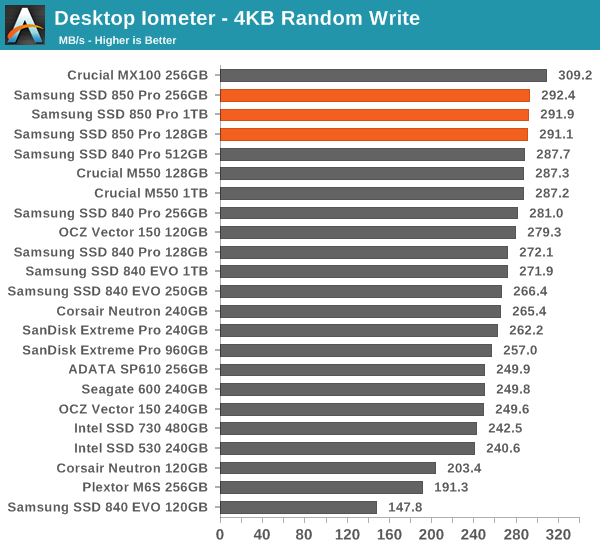
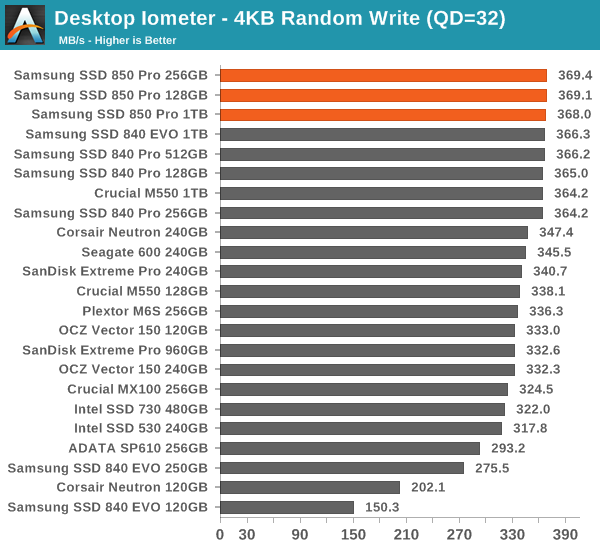
Random performance is also brilliant and the 850 Pro tops almost all of our benchmarks. It is no wonder why it is so fast in the Storage Benches.
Sequential Read/Write Speed
To measure sequential performance we run a 1 minute long 128KB sequential test over the entire span of the drive at a queue depth of 1. The results reported are in average MB/s over the entire test length.
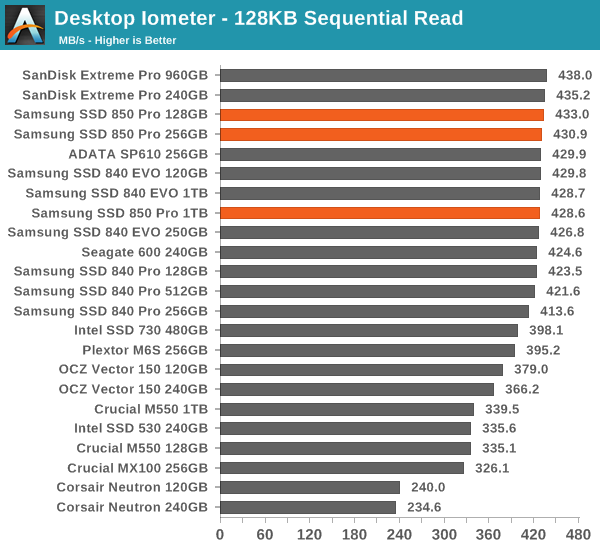
The same goes for sequential speeds. Of course, the differences are not substantial but nevertheless the 850 Pro is fast.
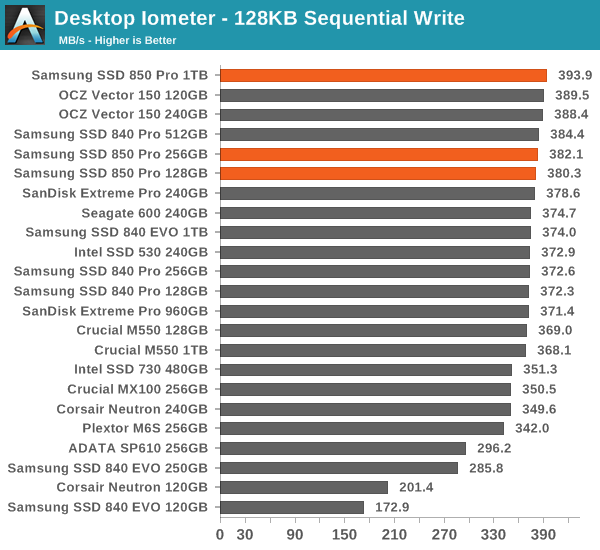
AS-SSD Incompressible Sequential Read/Write Performance
The AS-SSD sequential benchmark uses incompressible data for all of its transfers. The result is a pretty big reduction in sequential write speed on SandForce based controllers, but it doesn't impact most of the other controller much if at all.












160 Comments
View All Comments
Cerb - Tuesday, July 1, 2014 - link
The SSD just quitting could brick the drive, and could hose up the FS. Like ECC RAM, if you need power loss protection, you need it regardless of file system. IMO, they should all at least be equipped with enough to gracefully finish in-progress writes and shut down (not necessarily empty buffers, but set up a state that they can be guaranteed to be able to roll back from).sonicology - Tuesday, July 1, 2014 - link
Typo?"Scaling below 20nm was seemed as a major obstacle but the industry was able to cross that..."
seemed a major obstacle or seen as a major obstacle, but not seemed as a major obstacle
Bladen - Tuesday, July 1, 2014 - link
Is it just me, or does the "Performance Consistency" page have interactive charts, all of which are entitled "(SSD name and capacity) - 4KB Random Write (QD32) Performance", but with different results in each of the graphs for the same SSDs and capacities? Also, descriptive text is missing below the last two.I'm presuming they are supposed to be a read and another read or write one, presumably at a lower queue depth.
MrSpadge - Tuesday, July 1, 2014 - link
They're the same data in different scales.paesan - Tuesday, July 1, 2014 - link
I purchased a 512GB MX100 when they first came out for $199. No way the extra speed from the 850 pro is worth over twice the price as the MX100. Nobody is going to keep that drive for 10 years anyway. In 10 years the drive will be obsolete. Most users won't even notice the difference in speed in their every day usage.MrSpadge - Tuesday, July 1, 2014 - link
BTW: that image is surely not an X-Ray but "just" an ordinary SEM image (scanning electron microscope).Spatty - Tuesday, July 1, 2014 - link
This is correct. SEM image after a FIB.drwho9437 - Wednesday, July 2, 2014 - link
As I mentioned elsewhere, it is probably a STEM bright field image after a FIB liftout of the gate stack. Certainly not an X-ray; he should be correct the article...Cerb - Tuesday, July 1, 2014 - link
"The wear out causes the insulators to lose their insulating characters" - shouldn't that be characteristic(s)?jann5s - Tuesday, July 1, 2014 - link
I'm wondering If this technology will also end up in SD (XD) memory cards?